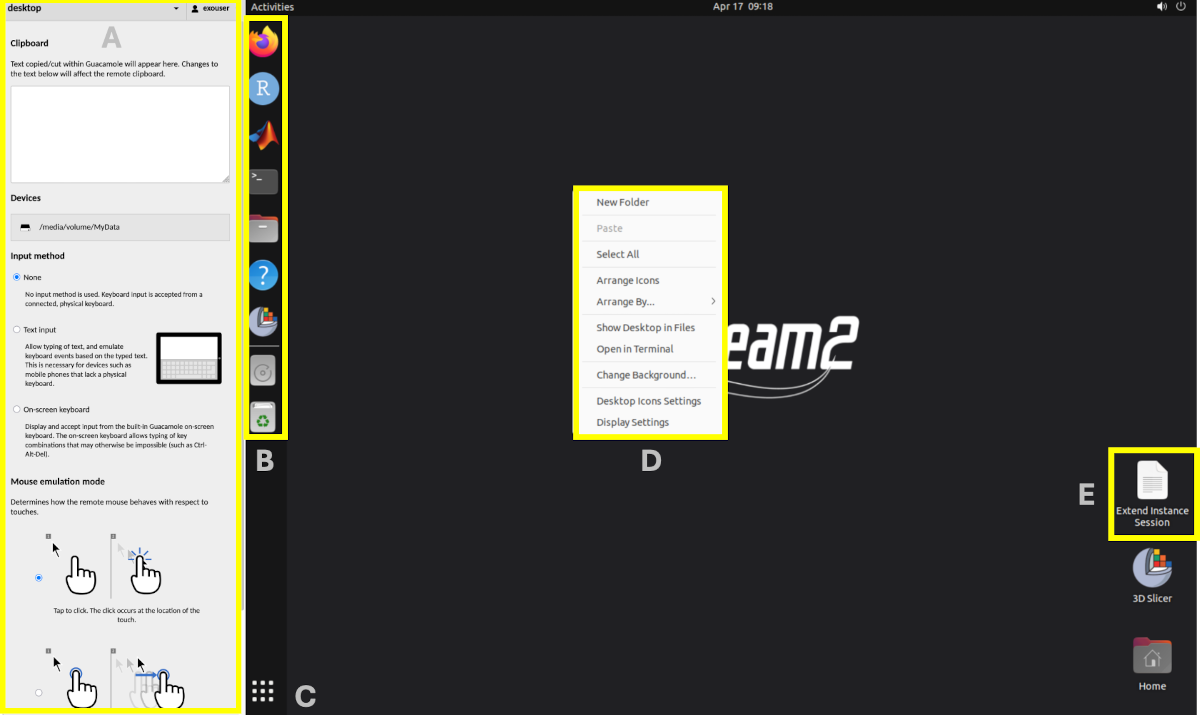
MorphoCloud provides on-demand cloud instances and reusable GitHub workflows to support computational morphology, 3D morphometrics, and biomedical imaging research.
It allows researchers and educators to launch powerful JetStream2 virtual machines — preloaded with 3D Slicer and SlicerMorph — by simply opening and commenting on GitHub issues.
✨ What You Can Do with MorphoCloud
- Run Slicer in your browser: GPU-enabled remote desktops with up to 40GB GPUs and 1TB RAM.
- Request and manage instances with GitHub Issues: no portals, no manual provisioning.
- Automated lifecycle management: Create, shelve, unshelve, renew, or delete
instances via simple
/commands. - Integrate workflows into your project: Use MorphoCloudWorkflow to vendorize and customize provisioning logic for your community.
- Support research and teaching: Ideal for occasional high-performance computing needs in morphology and imaging.
🖥️ Available Instance Types
| Flavor | RAM | Cores | GPU | Storage | Use Cases |
|---|---|---|---|---|---|
| g3.l* | 60GB | 16 | A100 (20GB) | 100GB | General purpose morphology and morphometrics |
| g3.xl | 125GB | 32 | A100 (40GB) | 100GB | Photogrammetry, NNInteractive, AI applications |
| m3.x | 250GB | 64 | None | 100GB | Computationally intense tasks that don’t require GPU; eg., Image registration with ANTsPy |
| r3.l | 500GB | 64 | None | 100GB | Image registration with larger dataset |
| r3.xl | 1000GB | 128 | None | 100GB | Image registration with larger dataset |
*g3.l is the default instance and is usually more available than other instance flavors.
Check real-time JetStream2 resource availability →
🔑 Commands
Once approved, you can control your instance from the issue itself:
| Command | Description |
|---|---|
/create |
Provision a new instance |
/shelve |
Suspend (turn off) instance |
/unshelve |
Resume shelved instance |
/delete_instance |
Delete an instance |
/delete_volume |
Remove associated storage |
/renew |
Extend lifespan of instance by another 60 days (one time only) |
/email |
Resend access email |
See the full command reference.
🚀 Quick Start
-
For Researchers / Educators: 👉 Request an instance via MorphoCloudInstances issue templates. Approval typically takes <24h.
-
For Project Maintainers / Admins 👉 Integrate workflows from MorphoCloudWorkflow into your GitHub projects. See Requirements and Runner setup.
🖼️ Desktop Environment

- Side toolbar (Ctrl/Cmd + Alt + Shift) for file transfers & clipboard.
- Shortcuts for Slicer, SlicerMorph, and MyData storage.
- Right-click menu to adjust resolution and display settings.
- Extend session with one click (+4 hours).
🙏 Funding & Acknowledgments
MorphoCloud services, including MorphoCloud On-Demand Instances, are supported by funding from the National Science Foundation (DBI/2301405) and National Institutes of Health (NICHD/HD104435). MorphoCloud runs on cyberinfrastructure that is made available by current and previous funding from the National Science Foundation (JetStream2: OAC/2005506, Exosphere: TI/2229642). Initial development of SlicerMorph was previously supported by National Science Foundation (DBI/1759883).
If you use any of the MorphoCloud services for your project, please acknowledge our funders with this statement:
This study relied on cyberinfrastructure supported by grants from the National Science Foundation (MorphoCloud: DBI/2301405; JetStream2: OAC/2005506; Exosphere: TI/2229642) and the National Institutes of Health (MorphoCloud: NICHD HD104435).